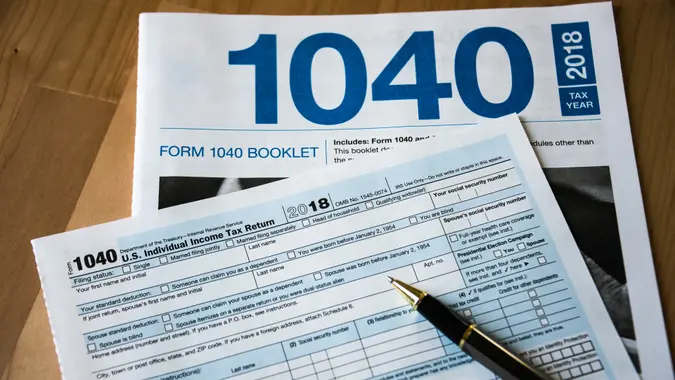How To Check Your IRS Balance on the Taxes You Owe

Commitment to Our Readers
GOBankingRates' editorial team is committed to bringing you unbiased reviews and information. We use data-driven methodologies to evaluate financial products and services - our reviews and ratings are not influenced by advertisers. You can read more about our editorial guidelines and our products and services review methodology.

20 Years
Helping You Live Richer

Reviewed
by Experts

Trusted by
Millions of Readers
It’s tax time again. For some, that means getting back on track with tax items that have fallen off the to-do list.
First among these? Addressing any remaining balance from past years, as well as taking a look at any payment plans in default. The updated IRS website is surprisingly easy to navigate, so this item will be easy to check off your tax to-do list. Let’s get started.
Also see ways to lower your tax bill.
Create Your Account
First, go to irs.gov and sign into your existing account or create a new one. If you set up your account before Nov. 14, 2021, and used it only for payment plans, you’ll be prompted to set up a new account with ID.me. You upload your driver’s license or passport and complete the prompts on your phone to get verified. After that first time, you’ll use your password and two-factor identification to get logged into the IRS site.
Once logged in, the Account Balance tab will take you to a page that shows any outstanding balances by year. This page also has a one-time payment button if you’re ready to pay off your balance in full or make additional payments to resolve the debt faster. (Note: If you have a payment plan in place and do plan to pay in full, make sure you make that final payment 10 business days before your normal payment, to allow the system time to clear the debt.)
Set Up a Payment Plan
If you haven’t already, set up a payment plan with direct deduction from your bank account. This will keep you current and means you won’t have to remember to log in and make a payment or send a check, which could get lost in the mail. Long-term monthly plans have one-time setup fees of between $31 and $130, with low-income fee waivers. You can revise an existing plan or restart one in default for $10.
Remember, while it may feel like a bummer to have tax debt, it’s one of the lowest-cost debts you can carry. The interest rate is determined quarterly and is the federal short-term rate plus 3% — far better than any credit card, mortgage or bank loan.
As stressful as tax season can be, knowing what you owe and getting on track with a repayment plan can alleviate some of the worry in your debt repayment journey.
More From GOBankingRates
 Written by
Written by  Edited by
Edited by 

























